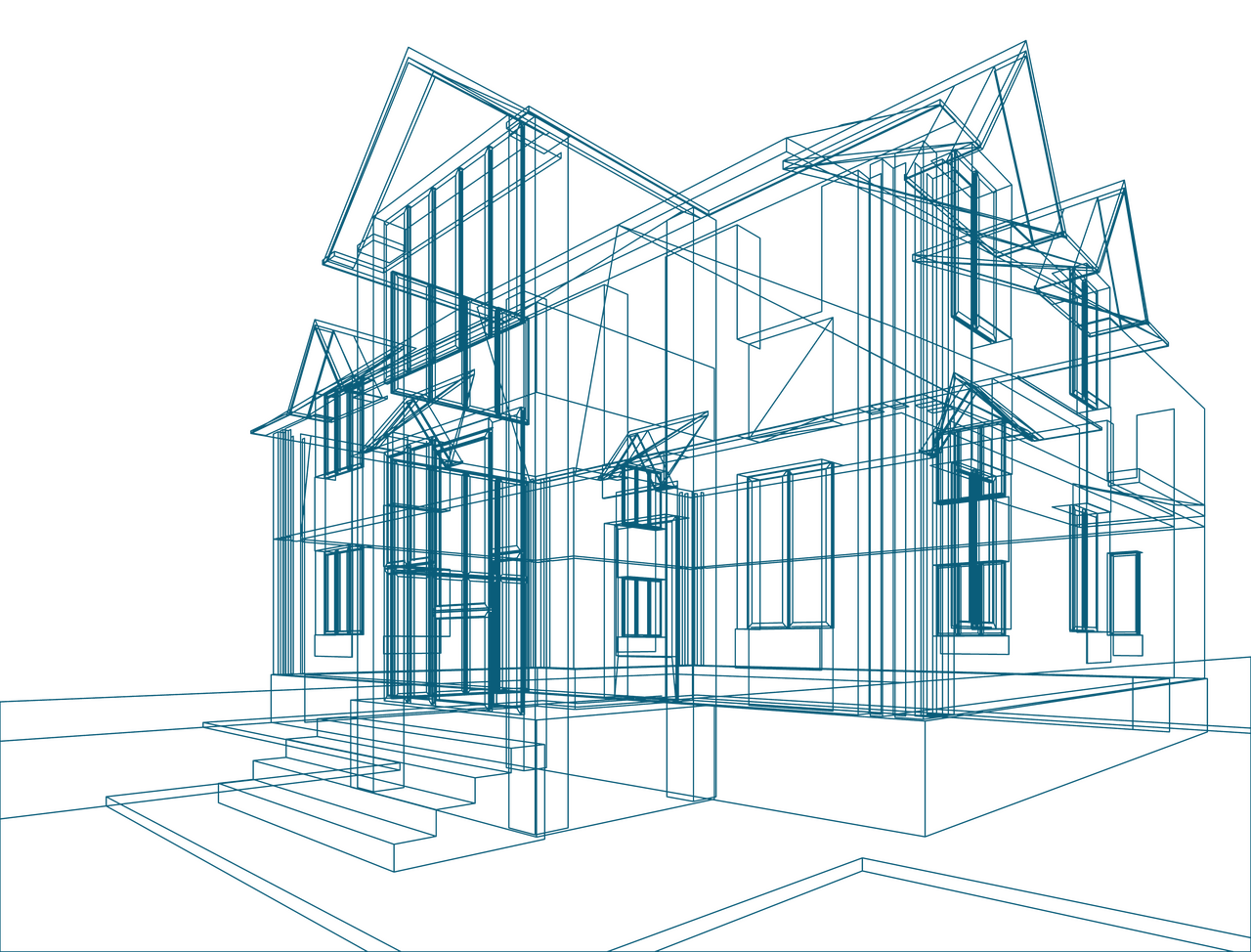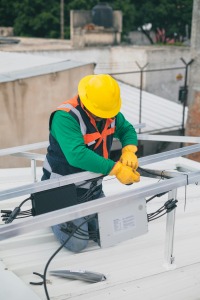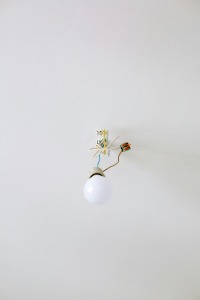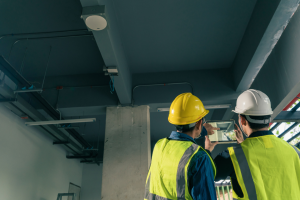


Market report
BIM usage among Electrical installers
Gain insights into the European electrical installation monitor market with USP Research's detailed market reports. Stay informed on industry trends, growth opportunities, and key players.
Blogs I published 20 September 2024 I Dirk Hoogenboom
The Future of Electrical Installation: How BIM is Revolutionizing the Industry
Picture this, you’re about to redo a living room. The contractors, electricians and designers have put pen to paper and are waiting to do their part of the work – knock down walls, arrange the new furniture and set up all the new outlets and lighting. Just as the electrician is about to install the lighting, however, they realize it’s directly under an air vent. Now there’s a delay, and everyone is scrambling to adjust the plans.
This could’ve been prevented if everyone had had the full picture from the get go. And that’s exactly what building information modeling – or BIM – does: keeps everyone on the same page digitally, anticipating issues in real-time and projecting how the build will unfold from beam to cable, from vent to outlet. So, today, we’re going over BIM in the electrical installation sector; what it is, how it can help you and how it’s gradually becoming an industry standard. Here’s the lowdown.
BIM 101 – What is It?
Architects design, contractors build, and electricians wire – it sounds simple enough. But more often than not, they work separately, updating each other as they go, hoping that by the end, everyone’s plans align perfectly. Getting to “the end,” however, involves numerous steps – redrafting, redesigning, reorganizing and redoing. Most of those are due to a lack of real-time collaboration.
Building information modeling is a workaround for these challenges. It’s a 3D rendering of a building that provides a comprehensive, collaborative platform for architects, engineers, contractors, electricians – essentially anyone involved in the build. Unlike traditional methods, where work is done in silos and pieced together later, BIM revolves around shared data and real-time updates: how the building will look, where everything will go, how much material is needed and what potential clashes might arise.
For example, say the architect decides to move a wall: everyone involved in the build sees this change immediately and has both the info and the time to adjust their plans. No more last-minute surprises and improvisations. Keeping everyone in the loop helps professionals plan better, avoid mistakes and improve efficiency. For electrical installers, BIM pinpoints where every cable needs to go, what type of cable to use, how much wiring is required, or even details like resistance level and installation costs. All of this while ensuring those plans don’t interfere with systems like plumbing or HVAC. It’s a cheat sheet for the big picture.


BIM Awareness and Usage
The construction and installation industry are notoriously conservative in adopting new trends. They like their business done traditionally and are rarely the first to adopt innovative solutions. BIM, however, has shifted the tides, and we’re noticing that, with time, it’s gaining more and more ground. Compared to 2018, awareness and usage have clearly increased (from 26% to 46% and from 5% to 11% respectively), so there’s good reason to expect steady growth in the upcoming years across Europe.
Who’s Leading the Way?
Key adopters of BIM are architects, and up until 2023 – since 2009, when the rate of use was 10% – we’ve seen a gradual increase to 45%. A flatter growth in recent years correlates with a noticeable decrease in European new build volumes, but our research suggests that, come 2027, BIM users will have grown to 59%.
As we move further down the business chain in the construction and installation industries, the adoption rate of BIM becomes progressively slower. Contractors currently have a BIM adoption rate of around 12%, installers follow closely at 11%, while HVAC specialists lag at 9%.
What To Keep in Mind
BIM awareness and usage is very country-dependent. Looking over Europe from a bird’s eye perspective, we see lowest use in Italy (32%), while The Netherlands is undoubtedly the frontrunner with a whopping 76%.
Next, project sizes and build-types affect adoption too – as per 31% of installers, BIM is mostly a new-build, large-scale construction game. Design complexity and need for precise coordination make it particularly valuable in projects where there’s more unknowns: non-residential complexes, commercial buildings or public infrastructure. That’s why BIM won’t show up as much for single-family homes or renovations, but will be government-mandated for, say, public buildings like schools or hospitals.
Many professionals in these sectors don’t rely heavily on BIM for their day-to-day work. Instead, they often just download the relevant images or models from architects or engineers and proceed with business as usual, meaning: the further you are from the design phase, the less likely BIM is to be a central tool.
Bigger Companies Driving Adoption
This all means that BIM usage is helmed by larger companies. They typically have more resources – both in terms of finances and manpower – to invest in the necessary software and training. And usually work on larger, new-build, non-residential projects where the scale and complexity make BIM’s benefits more evident.
Focus Point: BIM Adoption Among Installers
BIM is becoming a game-changer for electrical installers, but the journey is a bit different depending on where you are in Europe. The Netherlands is leading the pack with high BIM usage and awareness among electrical pros, but Italy, Poland and Germany are still catching up with lower adoption rates. More and more installers are learning about BIM and starting to use it, but there’s still a lot of room for improvement. Here’s what’s holding it back.
Is It Worth It?
The installation sector is struggling with a perceived lack of benefits regarding BIM. Doing mostly smaller projects, but investing in a system that’s thought to belong to large-scale frameworks seems unnecessary and will continue to deter adoption. The UK, Germany and France state that BIM offers no benefits to their organization – at 23%, 48% and 54% respectively – while a close second across Europe isn’t even considering it in its operations.
Knowledge Gap and Training
BIM is new tech, and new tech means know-how. Many installers are not familiar with BIM’s potential advantages and need specialized training to manage it, which hampers adoption – 22% of them consider this the greatest limitation.
Steep Financial Investments
Something “maybe not worth it” coupled with “no one knows how to work it” is bound to impact adoption rates. Add upfront costs to an already uncertain system, and BIM tools become major concerns for 19% of installers.
Braving the Transition
Installers lack clear BIM expectations from electrical product manufacturers, with roughly one in four having no expectations and the rest hoping for both know-how transfer and technical product specifications. Meaning? Support. They need clear guidance and training to make the BIM transition smoother, so when this is facilitated, penetration is likely to increase.
Software and Sources
Less than half BIM-using companies have BIM-software. Amongst those that do, Revit is the reigning champion, used by 44% of electrical installers already on board with BIM. It’s especially popular for tasks like implementing cables and wiring (36%). A solid 35% of BIM users see a significant portion of their revenue coming from BIM projects.
As for a broader picture, European installers primarily rely on architects and designers (27%) or contractors (19%) for their BIM information.
Future Prospects
As the construction industry evolves, so does the role of building information modeling in electrical installation. Here’s what our data says about its future.
New Builds vs. Renovation
The adoption of BIM among electrical installers will vary depending on the type of projects they work on. New build is slowly recovering from the market pressure, and that means volume will dictate wider spread BIM use. If BIM is an all-new-build trek, more new build will surely mean more BIM. Larger electrical installation firms, which typically handle new construction projects, are already integrating BIM to streamline processes and improve accuracy. However, for firms that focus on renovation and replacement projects, BIM is less commonly used because these projects often involve updating existing structures.
Need for BIM Information
As BIM gains traction in new builds, manufacturers of electrical materials and products will need to supply detailed BIM data. For example, cables will require BIM information including type, resistance, length and cost. Providing this detailed data ensures that all components are accurately represented in the BIM model, facilitating better planning and execution.
Embracing AR and VR
Looking ahead, augmented reality (AR) and virtual reality (VR) technologies will enhance the BIM experience. With AR and VR glasses, electrical installers will be able to virtually walk through building models, offering a more immersive and intuitive way to visualize and interact with their work.
BIM Standardization
The size of an electrical installation firm – we’ve already seen, and will continue to – significantly influences BIM adoption. Larger firms, handling bigger and more complex projects, are more likely to implement BIM, so as it becomes increasingly important for large-scale projects, its adoption will continue to grow, setting new industry standards.
Advancements in AI and Software
The future of BIM will also benefit from advancements in artificial intelligence (AI) and software. Enhanced AI-driven software will simplify BIM processes, making it easier for electrical installers to integrate it into their workflows.


Conclusion
Building information modeling is quickly shaking up the electrical installation world. While it might seem like a big leap right now – especially for smaller projects – it’s clear that the future of large-scale construction and new builds will depend heavily on this technology. So don’t miss out on the curve. As AI, AR and VR continue to evolve, BIM will become easier to use, more affordable and an essential tool for improving efficiency and accuracy.
Wondering how BIM can transform your projects? Stay in the loop with our blogs, market reports and webinars or get in touch to learn more about the future of the installation industry – today!
Installation Consulting Services for You
We provide tailor-made market research and off-the-shelf reports, both B2B & B2C, qualitative and quantitative. Here are some you might be interested in
Monitor and improve client relationships to drive loyalty and repeat business in construction.
Map out key interactions and pain points to refine the overall construction experience.
Identify the aspects of service or product that most impact satisfaction in construction projects.

Read more

Fresh Insights Await
Our relevant reports
Delve into the newest findings across various market segments, crafted for a cutting-edge overview. Explore our insightful reports, brimming with up-to-date data, trend analyses, and in-depth examinations, all tailored to provide you with a comprehensive understanding of the current market dynamics.
Construction
Home Improvement
Installation
Special reports












